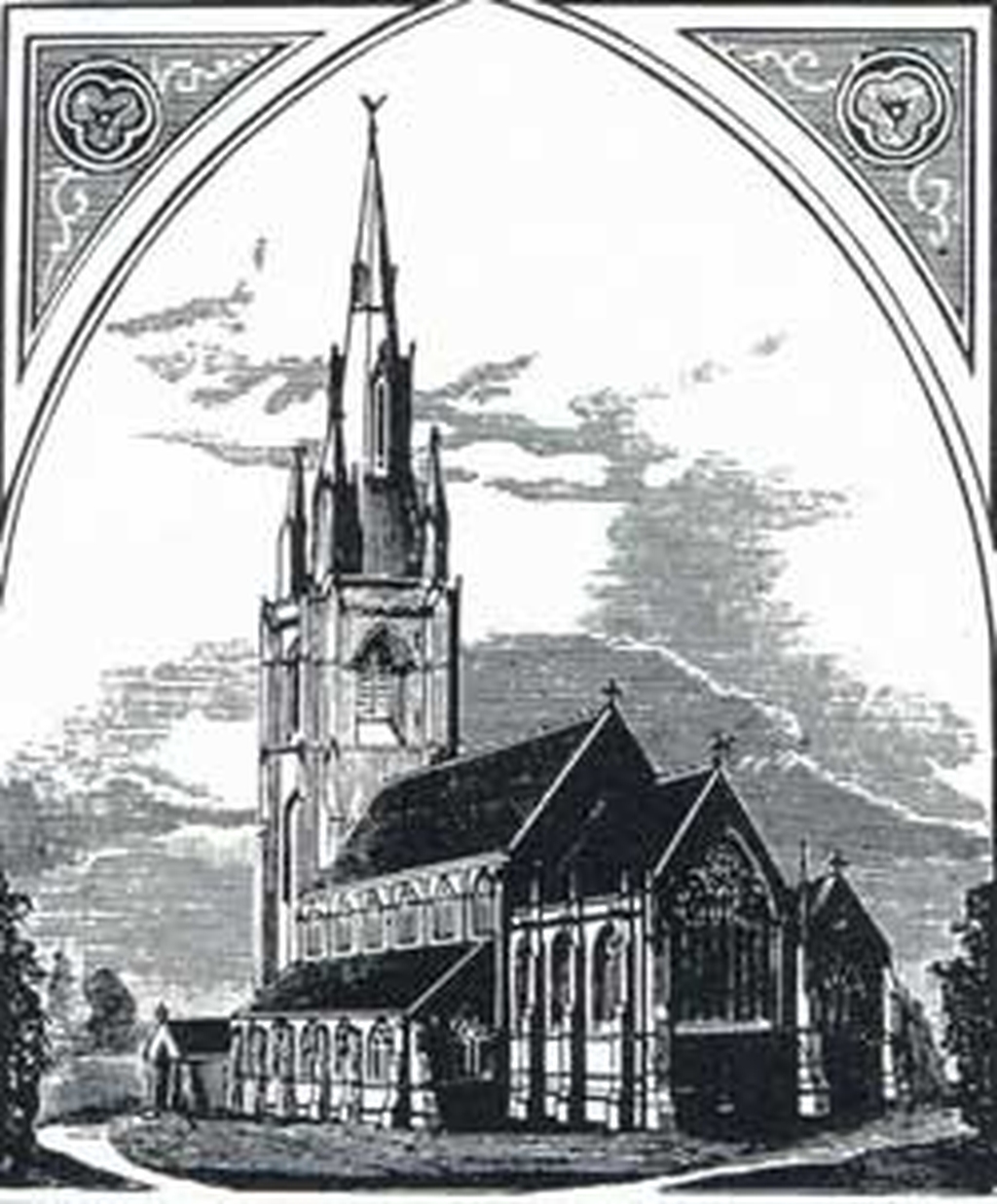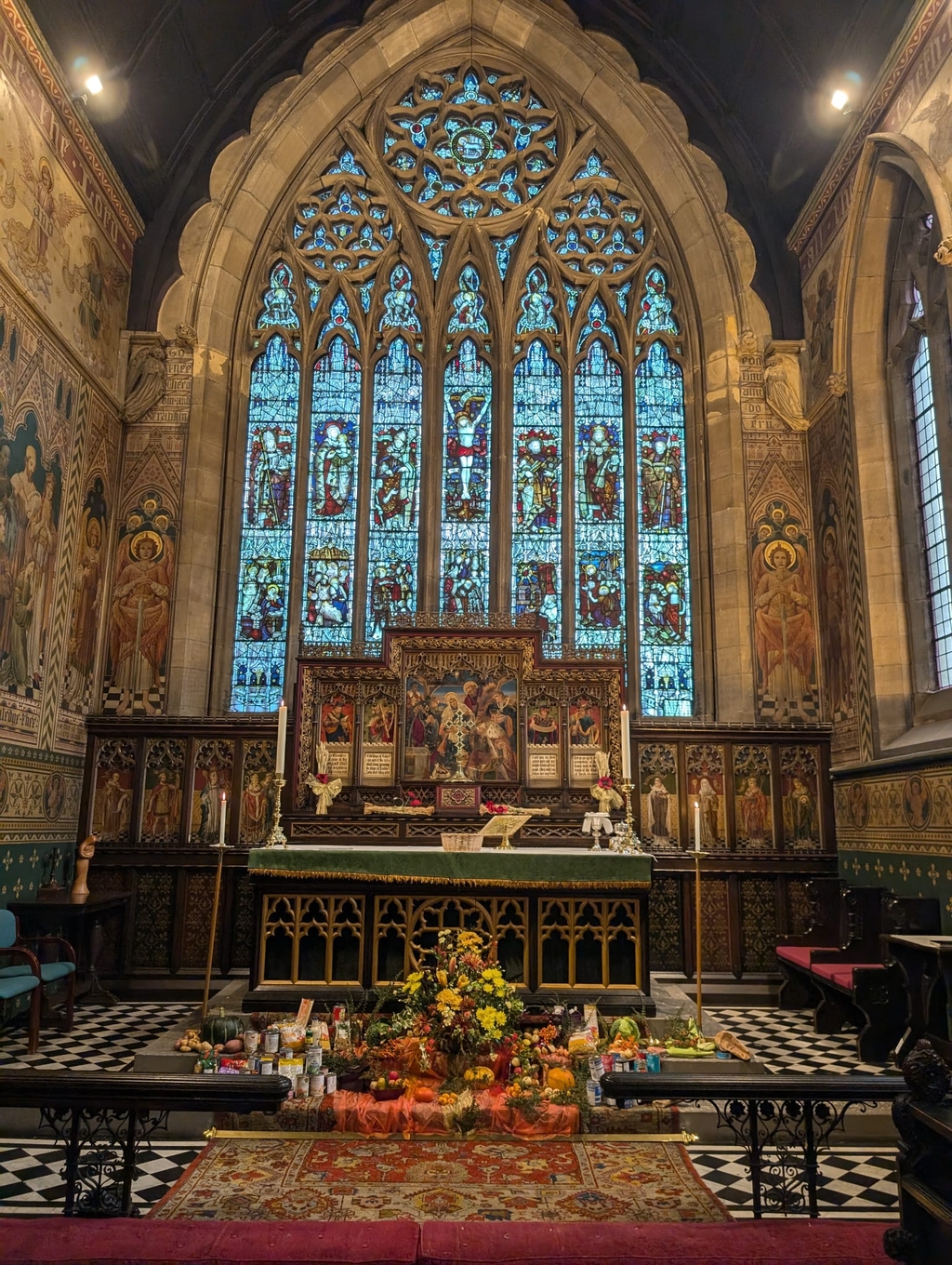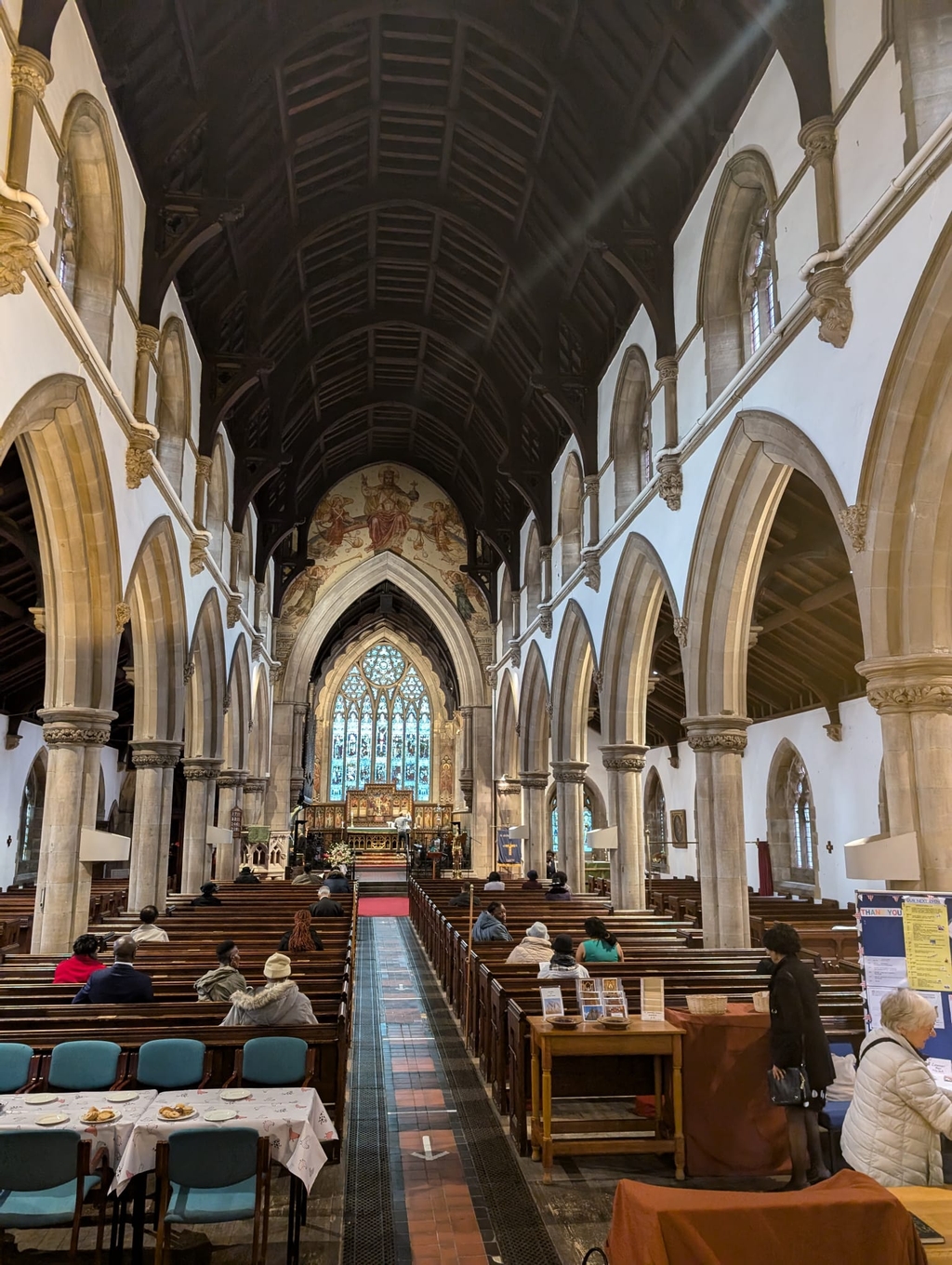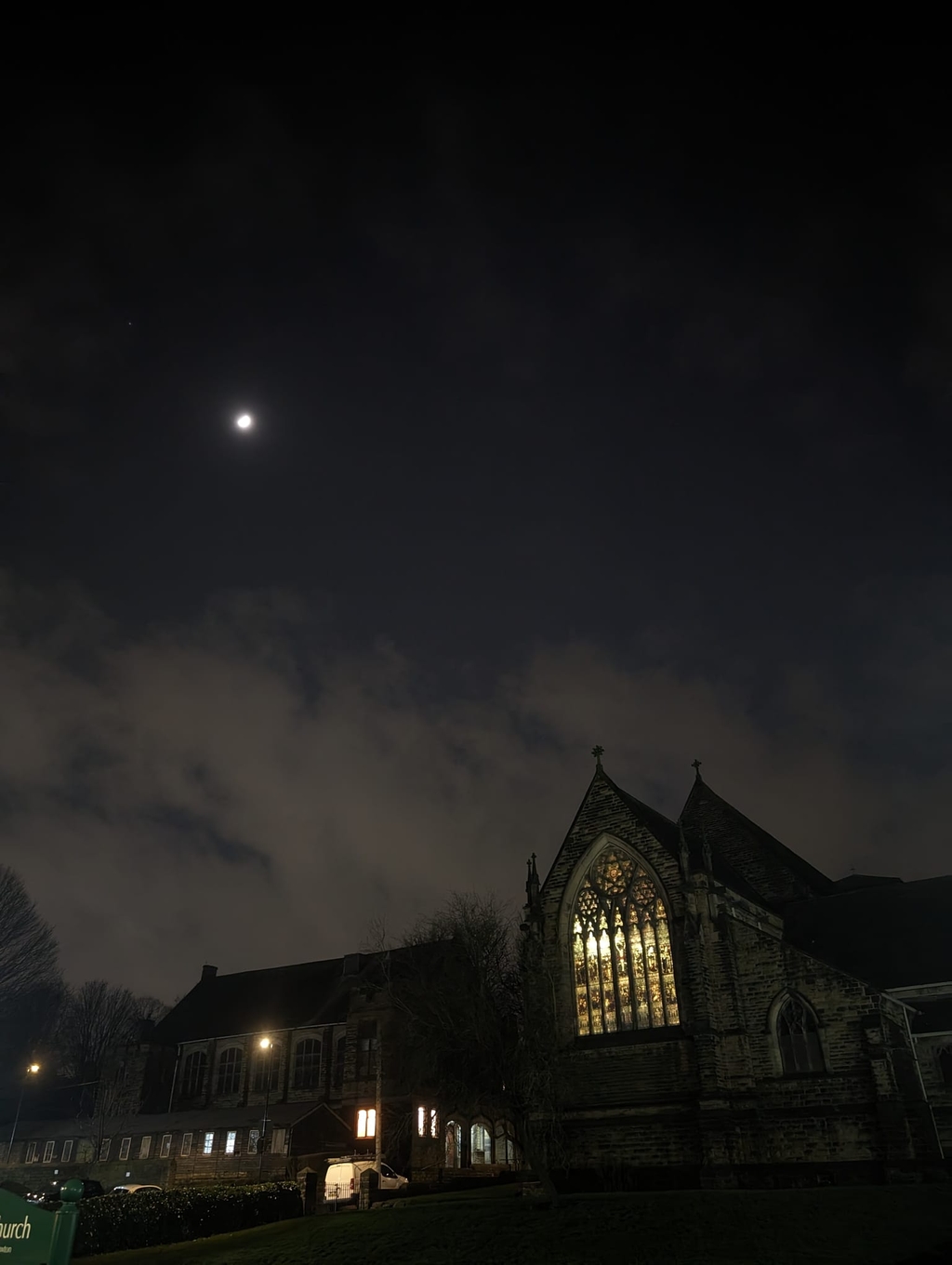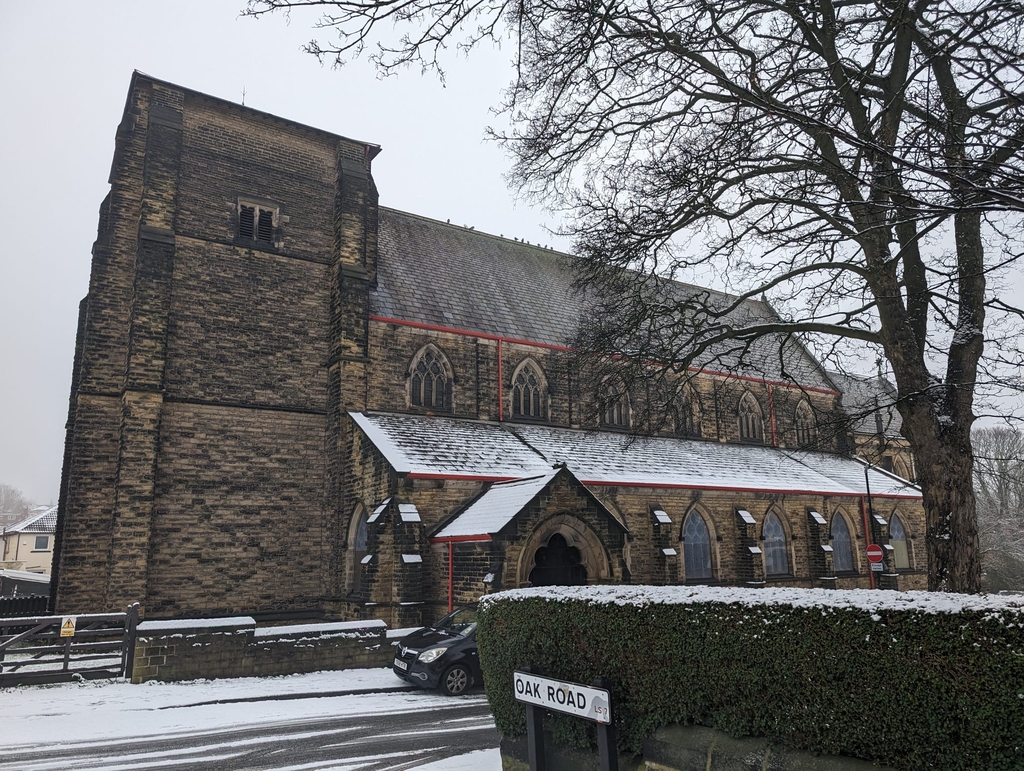St Martin’s Church was consecrated in 1881 by the Bishop of Ripon on Easter Tuesday, 19th April 1881. The Architects were Messrs Adams and Kelly of Leeds and the cost of building St Martin’s was £8,500. The church is built of stone from the Potternewton quarries which used to be in the vicinity of Sugarwell Hill. The church originally had a seating capacity of 700 and was supposed to have a tall spire, and be surrounded by fields with footpaths to the south and north doors. It was to be a new St Martin’s in the fields. The drawing shows St Martin’s Church as the architects designed it.
The building of the tower began in 1897 but could not be completed due to a weakness that developed in the foundations.
The murals were painted in October 1912 by Messrs Hemming and Co. of London. They were estimated to cost £255 after the necessary work on the walls had been carried out. The basis of the murals are the opening verses of the Te Deum. The murals were finally completed in 1913.
The formation of the parish was the result of a committee meeting held at the Leeds Church Institute in April 1876 and presided over by the Vicar of Leeds, Dr Gott. This included W.L. Jackson, the future Lord Allerton and MP. The site for St Martin’s was confirmed in June 1876 and architects Adams & Kelly were appointed. Subsequently, the boundaries of the new parish were decided upon.
The first Vicar was Reverend F. C. Kilner, who served from 1880-1892 and under his guiding hand the Church went from strength to strength. The great generosity of many people enabled the Church interior to be furnished. The building fund was also generously supported.
St Martin’s became known as a ‘musical church’ with excellent organists and large choirs. In 1890, the choir membership was 39; nine basses, eight tenors, four altos and eighteen boys. Annual choir trips were also held. There was a thriving Sunday School, a Communicant’s Association and Flower Services which continued annually until 1914. There were also social evenings and Parish Teas, which were held in the Parish room, as there was no Institute at the time. In 1883, the Vicar formed a Church Council (men only). This was to answer questions from the congregation.
The second curate, Reverend R.G.P. Bullock was appointed in 1885, serving until 1891. He then became the Vicar of St Luke on North Street. Sadly, Reverend Kilner’s wife died on Christmas Day 1891. In May 1892, he became the Vicar of Bingly and St Martin’s was offered to the Rev Bullock; he was inducted in July 1892.
In August, the Rev Kilner returned to St Martin’s to be married to a Miss Casson of Newton Villas and the Rev Bullock was his best man. So great was the interest, that admission to the Church was by ticket only.
In 1896, the Vicar Rev Bullock passed away very suddenly from spasmodic asthma. He was a bachelor and only 36 years of age. The congregation decided that the baptistery would be built as a memorial “to our beloved and honoured late Vicar”. This was dedicated by the Lord Bishop of Ripon in 1897.
Our beautiful church was consecrated by the Bishop of Ripon, Dr Bickersteth on Easter Tuesday, 19th April 1881. The new Church was crowned for the service and many were standing in the aisle. Early in 1880 the Rev Frances Charles Kilner D.D. was appointed as the first Vicar and served until 1892. He later became the Bishop of Richmond. The sermon was preached by Reverend R. R. Kirby, Vicar of Chapel Allerton, at the reqest of the Bishop who was too unwell to undertake the duty.
The chosen text was Numbers chapter 11 verses 15-16. In his sermon he said “the district in which the new church stood was a few years ago, an uninhabited region; with startling rapidity streets,terraces and avenues of houses sprung into being. The hillside where formerly stood the waving corn, now bustled with that other harvest the reapers of which were to be Angels”. Later on, he said ” the church would always be open every day for private and public prayers”. Obviously, vandalism and all that it means today was unknown in those days!
The hillside referred to was from Church Lane southwards, taking in the Potternewton Park area and the Sholebrokes. The inside of the church didn’t have stained glass windows and there was no Lady Chapel. The font was at the west end of the north aisle. The baptistery was built later in the memory of the second Vicar Reverend R.G.P. Bullock, who served from 1892 to 1896 having formerly been Assistant Curate at St Martin’s.
The cost of the new Church was £8,500. Of this, £1,000 was spent on the foundations. The Church was built of stone from Potternewton quarries – which used to be in the vicinity of the old windmill on Sugarwell Hill. The exceptions were the pulpit and the font, with a marble base, which were built of Caen stone. The Church was surrounded entirely by fields with footpaths to the north and south doors, but not for long.
For the first year, the Church Magazine was issued quarterly at 3d a copy, but later became a monthly at 2d for all copies, as it was in great demand. Sunday services were:
8.00 am Holy Communion
10.30 am Matins
3.30 pm Afternoon services (sometimes for men)
6.30 pm Evensong
Helen Broadbent – St Martin’s Church Archivist




